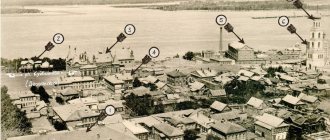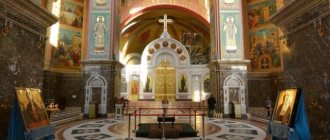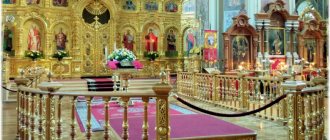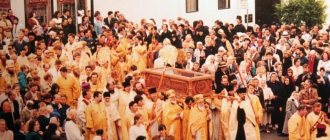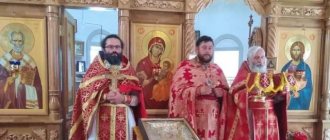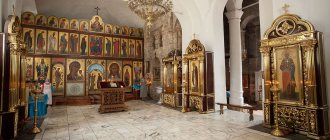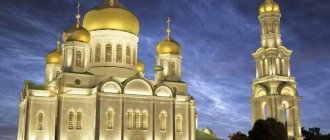Mir
Ukraine Kharkov region Kharkov Annunciation Cathedral (Kharkov) Map is loading...
{"format":"leaflet","minzoom":false,"maxzoom":false,"limit":50,"offset":0,"link":"all","sort":[""], "order":[],"headers":"show","mainlabel":"","intro":"","outro":"","searchlabel":"\u2026 \u0441\u043b\u0435\ u0434\u0443\u044e\u0449\u0438\u0435 \u0440\u0435\u0437\u0443\u043b\u044c\u0442\u0430\u0442\u044b","default":"","import-annotation":false,"width ":"auto","height":"350px","centre":{"text":"","title":"""link":"""lat":49.99058099999999882356860325671732425689697265625,"lon": 36.22397099999999880992618273012340068817138671875,"icon":""},"title":"","label":"","icon":"","lines":[],"polygons":[],"circles":[ ],"rectangles":[],"copycoords":false,"static":false,"zoom":8,"defzoom":14,"layers":["OpenStreetMap"],"image layers":[] ,"overlays":[],"resizable":false,"fullscreen":true,"scrollwheelzoom":true,"cluster":false,"clustermaxzoom":9,"clusterzoomonclick":true,"clustermaxradius":80, "clusterspiderfy":true,"geojson":"","clicktarget":"","showtitle":true,"hidenamespace":false,"template":"","userparam":"","activeicon": "","pagelabel":false,"ajaxcoordproperty":"","ajaxquery":"","locations":[{"text":"\u003Cb\u003E\u003Ca href=\"/palomnik/%D0% 91%D0%BB%D0%B0%D0%B3%D0%BE%D0%B2%D0%B5%D1%89%D0%B5%D0%BD%D1%81%D0%BA%D0%B8% D0%B9_%D1%81%D0%BE%D0%B1%D0%BE%D1%80_(%D0%A5%D0%B0%D1%80%D1%8C%D0%BA%D0%BE%D0 %B2)\" title=\"\u0411\u043b\u0430\u0433\u043e\u0432\u0435\u0449\u0435\u043d\u0441\u043a\u0438\u0439 \u0441\u043e\u0431\u043e\u044 0 (\u0425 \u0430\u0440\u044c\u043a\u043e\u0432)\»\u003E\u0411\u043b\u0430\u0433\u043e\u0432\u0435\u0449\u0435\u043d\u0441\u043a\u0438 \u0439 \u0441\u043e\ u0431\u043e\u0440 (\u0425\u0430\u0440\u044c\u043a\u043e\u0432)\u003C/a\u003E\u003C/b\u003E\u003Chr /\u003E\u003Ca href=\»/palomnik/%D0% A1%D0%B2%D0%BE%D0%B9%D1%81%D1%82%D0%B2%D0%BE:%D0%90%D0%BD%D0%BD%D0%BE%D1%82 %D0%B0%D1%86%D0%B8%D1%8F\" title=\"\u0421\u0432\u043e\u0439\u0441\u0442\u0432\u043e:\u0410\u043d\u043d\u043e\u0442\ u0430\u0446\u0438\u044f\»\u003E\u0410\u043d\u043d\u043e\u0442\u0430\u0446\u0438\u044f\u003C/a\u003E: \u043a\u0430\u0444\u043 5\u0434\u0440\u0430 - \u0411\u043e\u0433\u043e\ u0434\u0443\u0445\u043e\u0432\u0441\u043a\u043e\u0439 \u0435\u043f\u0430\u0440\u0445\u0438\u0438 \u0423\u043a\u0440\u0430\u0 438\u043d\u0441\u043a\u043e\ u0439 \u043f\u0440\u0430\u0432\u043e\u0441\u043b\u0430\u0432\u043d\u043e\u0439 \u0446\u0435\u0440\u043a\u0432\u0438 \u041c\u 043e\u0441\u043a\u043e\u0432\ u0441\u043a\u043e\u0433\u043e \u043f\u0430\u0442\u0440\u0438\u0430\u0440\u0445\u0430\u0442\u0430. \u042f\u0432\u043b\u044f\u0435\u0442\u0441\u044f \u043f\u0430\u043c\u044f\u0442\u043d\u0438\u043a\u043e\u043c \u0430\u0440\ u0445\u0438\u0442\u0435\u043a \u0442\u0443\u0440\u044b.","title":"\u0411\u043b\u0430\u0433\u043e\u0432\u0435\u0449\u0435\u043d\u0441\u043a\u0438\u0439 \u0441\ u043e\u0431 \u043e\u0440 (\u0425\u0430\u0440\u044c\u043a\u043e\u0432)","link":"","lat":49.99058099999999882356860325671732425689697265625,"lon":3 6.22397099999999880992618273012340068817138671875,"icon":""}], "imageLayers":[]}
49.990581; 36.223971
Ukraine, Kharkov, Blagoveshchenskaya square, 1
Kharkov, Kharkov region
Ukraine
Telephone:
(057) 712–47–37 (altar), 777–00–83 (on duty)
Cathedral of the Annunciation of the Blessed Virgin Mary
(Annunciation Cathedral) in Kharkov is the cathedral of the Kharkov-Bogodukhov diocese of the Ukrainian Orthodox Church of the Moscow Patriarchate. It is an architectural monument.
History[edit]
The history of the cathedral, or rather the wooden church, began in the 50s of the 17th century, when, simultaneously with the development of Kharkov, outposts of Orthodoxy were founded - the Rozhdestvenskaya, Nikolaevskaya, Voznesenskaya and Blagoveshchenskaya churches.
The turbulent fate of the church is replete with tragic events, the first of which was a fire in 1738, when it was completely destroyed. But thanks to the parishioners of the Zalopany settlement, the church did not remain in oblivion for long - it was quickly restored to its original form.
However, the new wooden church did not stand for long - in 1789 it was decided to replace it with a stone one designed by Pyotr Anatolyevich Yaroslavsky (1750 - 1810), which was consecrated five years later and opened its doors to parishioners.
The expansion of the church, which until 1836 had a single altar (a table for celebrating the sacrament of Holy Communion for Christians), associated with the increase in the parish, caused the addition of the side-chapel churches of the Great Martyrs Barbara and John the Warrior with the assistance of the church warden A.D. Skrypnik. Which subsequently made it possible for the temple to bear the title of “City Cathedral” (until 1863).
The first stone Annunciation Church, 1846
The expansion of the parish did not stop there, which required either the expansion of the existing church or the construction of a new one. At an extended meeting of the church parish in 1887, a decision was made in favor of the latter and the foundation stone of the new church took place on October 2, 1888. The new church building was built according to the design of Mikhail Ivanovich Lovtsov (1850 - 1907) - the future chief architect of Kharkov - over the course of twelve years, while services took place in the old building.
The total estimate for the construction of the cathedral was 400,000 rubles. The temple was consecrated in 1901, after the demolition of the old temple building, from which icons and church utensils were transferred. And in 1913, the cathedral was already returned to the status of “City Cathedral”.
After 1917, the cathedral did not lose its religious significance: in 1919, on the right, the Church of Anthony the Roman was consecrated, and in 1921 in the chapel - Sergei of Radonezh.
The cathedral building had a hard time after 1930, when stables and an oil storage facility were placed within its walls.
Bell tower of the Annunciation Cathedral in Kharkov Bell tower of the Annunciation Cathedral in Kharkov
The resumption of worship in the cathedral occurred only in 1943, after which the temple was used only as a religious building. To strengthen its spirit, the relics of Saints Meletius and Athanasius (Petelaria) were transferred to the cathedral, and in 1946 it was given the status of “cathedral”.
Natural disasters continued to plague the cathedral - on the night of July 1-2, 1974, a hurricane tore the cross from the bell tower and carried it to the river.
The third shrine of the temple in 1993 became the relics of the relics of the holy martyr Alexander (Petrovsky).
In July 1996, a strong hurricane bent the new cross on the bell tower. A year later, on June 2, 1997, the restored cross, along with the upper part of the bell tower dome, was destroyed by a fire that broke out in the upper part of the dome room during welding work. When the dome was restored after the fire, its height increased slightly.
In 2007-2008, a new fence was built around the temple, emphasizing its monumentality.
On May 7, 2011, Patriarch Kirill of Moscow and All Rus' visited the Annunciation Cathedral. This was the first ever official visit of the head of the Russian Orthodox Church to Kharkov.
Shrines of the main temple of Kharkov
Of course, the main spiritual value of any temple will be the shrines that are stored in it. The temple itself and all the icons that are in it are consecrated, therefore, when coming to any church, we must remember that we are in a holy place, in God's house.
But in addition to the holy images that are in any church, some churches have special gifts in the form of holy relics. There are some in the Annunciation Cathedral in Kharkov. The rector of the cathedral is Metropolitan Onuphry of Kharkov and Bogodukhovsky, who serves special prayer services before the holy relics.
Metropolitan of Kharkov and Bogodukhov Onuphry
Saint Miletius, Archbishop of Kharkov
Worldly name - Mikhail Ivanovich Leontovich, born in Poltava province in 1784. The boy had clergy in his family, so from childhood the child grew up in an atmosphere of Christian faith and piety.
He was tonsured a monk at the age of 36, and before that age he managed to receive the title of professor of Greek language and church history. Monk Miletius very quickly ascended the steps of the church hierarchy, and within a few years he was ordained as a bishop.
The saint was very kind to all the weak, the poor, the deprived. He helped orphans, widows, and prisoners a lot. He became a true father for many who suffered hardships and suffering in this life. Saint Miletius loved everyone, had compassion for everyone, helped everyone and guided everyone on the true path in the faith of Christ. At the same time, he was very strict with himself, like any real ascetic of piety.
Saint Miletius paid special attention to the far corners of his homeland, where they still knew little about Christianity. At his instigation, Orthodox parishes were organized and opened in Kamchatka, near Yakutsk and Okhotsk. The harsh climate of the Irkutsk diocese, where he served, greatly undermined the saint’s health, and he was transferred to Kharkov.
Read about other saints revered in Orthodoxy:
- John Chrysostom of Constantinople
- Mitrofan of Voronezh the Wonderworker
- Nikolai Mirlikiysky
In Kharkov, the future saint paid special attention to the education of the clergy and began restoring religious schools and monasteries that were closed by Empress Catherine II. Saint Miletius was constantly in prayer, slept very little, and bothered himself in every possible way with deeds in the name of the Lord. Of course, such labors could not fail to educate his soul in holiness, and even during his lifetime the bishop gained the glory of a saint.
He went to the Lord quietly, after receiving the Mysteries of Christ, with endless prayer on his lips. The Orthodox Church believes that only people who truly achieved holiness during their lifetime are awarded such death.
Saint Miletius, Archimandrite of Kharkov, was canonized as a saint in 1978. His relics are located in the Annunciation Cathedral in Kharkov, in the left aisle. Many believers received help and healing from him in mental and physical illnesses.
Kharkov Annunciation Cathedral
Saint Athanasius, Patriarch of Constantinople
The future saint was born at the end of the 14th century on the island of Crete, Greece. The boy's family was rich and noble, but from childhood the wealth of the world did not seduce the child and his soul rushed to God. Therefore, as soon as age allowed, the young man took monastic vows.
While still in his youth, he gained fame as a great preacher with a good understanding of the Holy Scriptures. His outstanding abilities for theology and preaching did not hide from the then Patriarch of Constantinople Kirill I, and the future saint was ordained a bishop. Soon he replaced his predecessor on the patriarchal throne.
With the holiness of his life, sincere and ardent faith, and a pure desire to serve the Lord all his life, Bishop Athanasius attracted to himself many believers who were looking for a true ascetic. During his ministry, the bishop visited Moscow and Ukraine, where he was met by Bogdan Khmelnitsky.
The saint departed to the Lord and was buried in the city of Lubny, where 8 years after his death his holy, incorruptible relics were found. According to Eastern tradition, the ruler was buried sitting, and his relics were in the same form. Only his vestments and the chair on which he sat had decayed.
In 1948, the holy relics were transferred to the Annunciation Cathedral in the city of Kharkov, where they remain to this day, and worshiping them with sincere prayer creates real visible miracles.
Description[edit]
Annunciation Cathedral at night
The original single-altar wooden church (1655 - 1794) of the Annunciation of the Blessed Virgin Mary was made in a three-domed form with a free-standing bell tower. The main attraction was the icon of the Kazan Mother of God in a gilded robe (1776).
The first stone church (1789 - 1901) (design by P. A. Yaroslavsky) was a single-domed, three-altar church (two warm, one cold) with a stone bell tower.
The current Kharkov Blagoveshchensky, built according to the design of M.I. Lovtsov, is five-domed with many decorative elements, built in the Byzantine style with alternating rows of red brick and light plaster. The temple has two rows of windows used for lighting and decoration. The total capacity of the cathedral reaches four thousand people due to its size: height - 59 m, width - 34 m.
The stone bell tower, at one time one of the highest (80 m), is attached to the central part of the temple.
The total capacity of the temple is about 5,000 parishioners.
Story
The construction of the first church in the name of the Annunciation of the Blessed Virgin Mary dates back to the founding of the city. According to archival data, it was built around 1655 in the Zalopany part of the city. It was a single-altar wooden temple, surrounded by a fence. It was made in traditional Ukrainian three-domed forms with a free-standing wooden bell tower. Over time, this area of the city grew, which contributed to the expansion of the parish. In 1738 there was a major fire here and the church burned down. However, it was restored to its original form. An image of the first Annunciation Church can be seen on the city plan of 1787.
In 1789, a new stone church was laid, which was built according to the design of P. A. Yaroslavsky in the style of early classicism. Construction was carried out with donations from citizens. The first stone Annunciation Church was consecrated on September 8, 1794.
Until the 1830s, the church was single-altar, but with the growth of the population there was a need to expand the temple. Therefore, in 1836-1838. two chapels were built: in the name of the Holy Great Martyr John the Warrior and the Holy Great Martyr Barbara.
In 1844-1846. The church was completely renovated; the domes on the church, the iconostasis, the high place, the altar and the canopy above the altar were decorated with gold.
In 1846-1863. The Annunciation Church was called the “city cathedral”.
The decision to build a large, spacious church was made at a meeting of parishioners in November 1887. The development of the architectural project was undertaken by the chief diocesan architect M. I. Lovtsov.
On October 2, 1888, next to the old church, Archbishop of Kharkov and Akhtyrsky Ambrose solemnly laid the foundation stone for a new church. Construction lasted twelve years and was carried out mainly with donations from merchants from Kharkov and other cities. According to Lovtsov’s plan, the Annunciation Church was supposed to be significantly different from other Kharkov churches.
The new five-domed Annunciation Church was consecrated in 1901. It was created in the Byzantine-Russian style with a pseudo-Gothic tiered bell tower 80 m high. Due to the alternation of horizontal rows of red brick and light plaster on the facade, the temple has an unusual and memorable appearance. This monumental building with rich interior decoration and amazing dimensions fully reflected Lovtsov’s idea.
In 1901, the old temple was demolished, and the icons from it were transferred to the new one. The Annunciation Church became one of the largest in the Russian Empire and could accommodate up to 4,000 parishioners.
The temple was also distinguished by its rich interior decoration. Its walls were painted by the best Kharkov and Moscow artists, and the iconostasis was made of white Carrara marble. Unfortunately, the iconostasis has not survived to this day.
In July 1914, the temple again received the status of a “city cathedral”.
In the 20s of the twentieth century, the temple was looted, and in February 1930 it was finally closed. For some time, the temple premises housed a stable, an oil products warehouse, and even a gas station.
The cathedral was open for worship during the German occupation. Its official opening took place on August 23, 1943 - the day of the liberation of Kharkov.
From 1946 to this day, the Annunciation Church has been the cathedral of the diocesan center.
In 2007-2008 A new fence was installed around the temple, which emphasized its monumentality.
Temple during the Soviet years
With the advent of Soviet power over the cathedral, a struggle began between Orthodox dioceses, which lasted two years. In 1923, the Holy Annunciation Cathedral was plundered. Kharkov, in particular, lost its iconostasis and many church valuables, which were dismantled and removed from the church. That same year, the first, but not the last, attempt was made to close the temple. In 1925-26 In the cathedral building, with the permission of the authorities, concerts of sacred music were held on holidays.
In February 1930, the authorities finally decided to close the temple. From now on, its premises began to be used as a stable and oil depot.
The first service after the closure of the temple in the Annunciation Cathedral in Kharkov took place only on the day the city was liberated from fascist troops, August 23, 1943. After 3 years, the cathedral is awarded the title of cathedral. A few years later the relics of saints are transferred there - St. Meletia, St. Athanasius Patelarius seated and Alexander (Petrovsky).
Interior decoration
Since 1946, the incorruptible relics of Athanasius of Tsaregrad, seated on the throne, have been buried in the temple, which are the only ones of their kind in the Orthodox world. In 1654, he died on one of his travels, sitting on the throne, and was buried in the same position. Miracles, which are the incorruptible relics of the saint, were repeatedly described by clergy. Miracles continue to this day: the robe and shoes of St. Afanasia completely wears out within two to three weeks; there is currently no scientific explanation for this phenomenon.
The interior decoration of the Annunciation Cathedral (Kharkov) amazes with its richness and splendor. The restorers did a lot of work, as a result of which the updated altar, wall paintings and decorative elements made the temple a real pearl of Orthodox monasteries.
Kharkov Metropolitan Nikodim, known for his good deeds, who died in 2011, is buried on the territory of the cathedral.
How to get there
Address of the Annunciation Cathedral: Blagoveshchenskaya Square 1. You can get to it in several ways:
- by metro to the Central Market station,
- by buses of any route that passes through the Central Market,
- by tram No. 7, 12, 20 to the “Central Market” stop.
The best article for you, go to: Joseph-Volotsky Monastery
God bless you!
Annunciation Cathedral (Kharkov), service schedule
The temple can accommodate up to 5,000 people; during holiday services, parishioners who are not in the building even stand on the territory of the cathedral.
Every Saturday at 16.00 the Sunday all-night service begins, and at 7 am the next day the Divine Liturgy is read. The times of baptisms, weddings, memorial services and other services must be agreed upon separately.
More detailed information is provided on the official website by the Annunciation Cathedral (Kharkov). The schedule of holiday services, posts, news, requests - all this can be found on the temple’s website on the Internet.
The cathedral is open to everyone every day from 7.30 to 11.30.
Legends
Probably, there are only legends about any other temple in the world, just as there are so many legends about the Annunciation Cathedral.
According to the first legend, the entire city will fall if the relics of St. Afanasia.
The second legend says that the place was chosen poorly: either there used to be a city gallows there, or a pagan temple, or the planes of other worlds generally intersect. As evidence of this, they cite the cross of the temple that was damaged three times: once it was carried away into the river, the second time it was bent by a hurricane at an angle of 90 degrees in relation to the dome, and the third time it was completely destroyed by fire. However, the location for the future temple was chosen back in the 17th century, and then great importance was attached to this.
The third legend says that the Annunciation Cathedral and the Belgorod Monastery are connected by an underground tunnel. Who knows, maybe this legend is true, no one has given a refutation.

